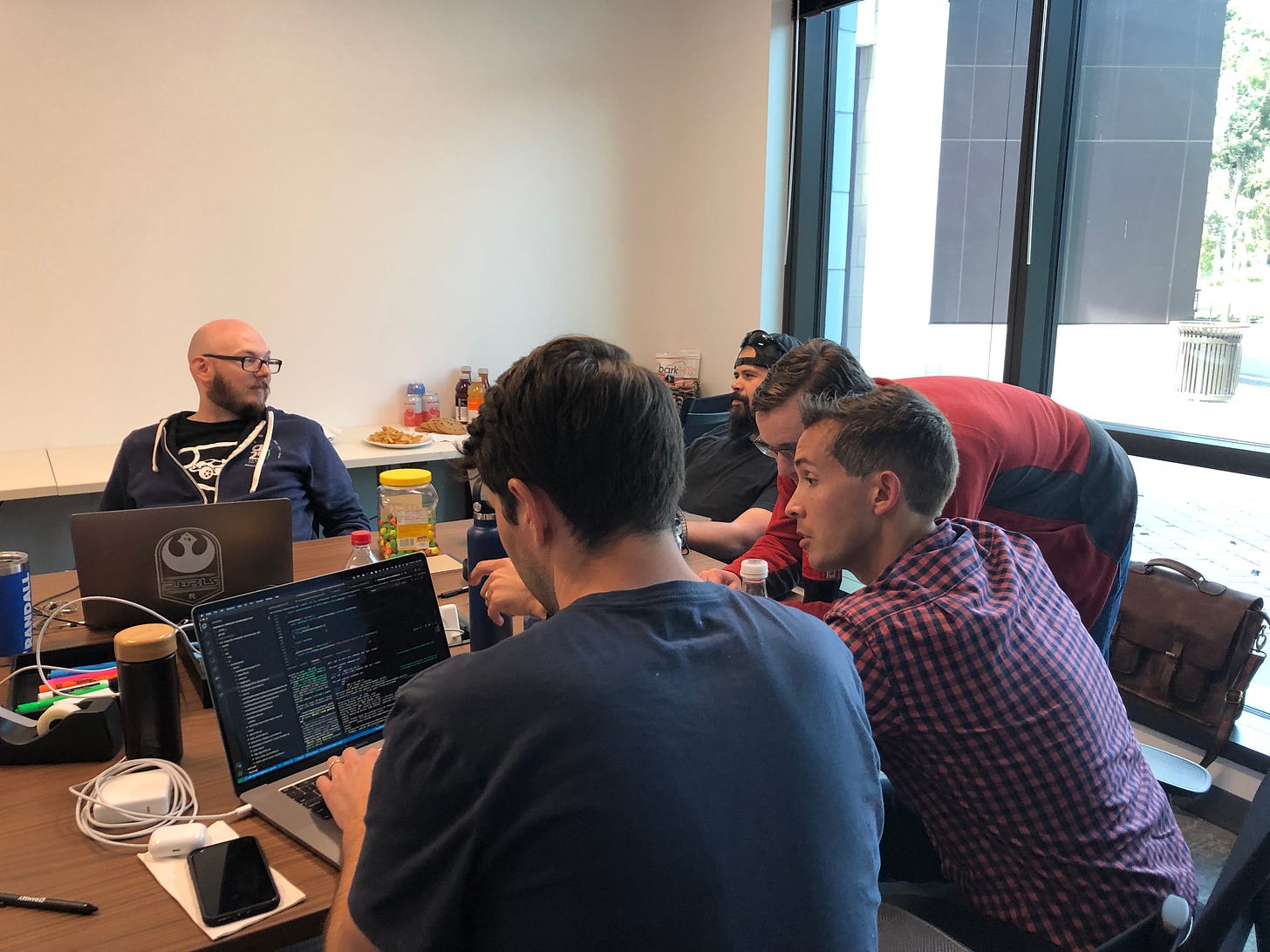Cadence: The Secret to Meetings That Don't Suck
How to Deliver Great Products With Only 4 Hours of Meetings a Week
Meetings are the worst. Hot garbage. 🔥
Honestly, I skip most of them. They're full of politics, fake agreement, and endless droning with no real impact. Having decided long ago that my time on earth is preciously short, I made a vow: Only go where I can be absolutely impactful. And when I do show up, I bring so much energy that (actual manager feedback here) I sometimes "elicit negative emotions."
Good. Meetings should be uncomfortable…if you're doing them right. 😈
Here’s something I learned from my Ramsey Solutions days: meetings are supposed to accomplish one thing. Make decisions. ✅ That’s it.
My pal Max once said, “Default to action.” And that’s how meetings should be run. If decisions are to be made, information must be transparent, conflict must flow, and the bull must be wrestled to the ground. No circling it. No admiring it. 🐂
Now, here is a small distinction with a big impact:
Meeting = Right people, right conversation, right time —> Decision
Collaboration = Brainstorming, training, coaching —> Organic exploration
I’m not saying this is the “correct” split. Just one that’s helped me survive the endless slog of bad meetings. Quibble with the definitions at your own peril.
The Right Way: Outcome
A real meeting isn’t just a time slot. It’s an outcome. (I use Agenda and Outcome interchangeably) Said a different way — it produces an outcome. A decision gets made. Lives are different. The outcome is the real, tangible thing you have after the meeting. If you don’t start with the end in mind, you will walk into a meeting, wake up an hour later, and wonder where the time went.
Clear inputs. Clear outputs. Wrestle the bull. Decide. Adjourn.
Collaborations can be more free-flowing. Meetings? Meetings need to be like a courtroom, not a coffee shop. But even when we get this right — we manage to focus on a great outcome and make a decision — what happens the moment you hit the hallway and someone that didn’t attend finds out a decision was made? That’s right, they blow up the decision like a random building in a Michael Bay movie. (Is it even an action flick if something doesn’t blow up in slow motion?)
That’s where Cadence shines.
The Right Time: Cadence
Hallway meetings are truly awful. Like little ambushes. The only thing worse than this, though, is scheduled repetition. Ever sat through the same meeting five times with five different groups and thought:
"Couldn’t we have done this once?"
Good news: You can.
The magic word is Cadence.
Cadence creates rhythm. Predictability. Clarity.
Example:
When do most people go to church?
Sunday, 10AM.
Everyone knows it.
Why? Cadence.
It’s scheduled. It’s known. You plan around it. You show up.
Meetings should work the same way.
When you set predictable cadences, people know where and when decisions happen. No more random pop-up meetings. No more five identical conversations. You save time, you save brainpower, and most importantly — you actually make decisions once. It does require discipline to direct one-off conversations back to these cadenced conversations, but it’s worth its weight in gold. Try something like, “Good idea Karen! Come to our planning session and we can discuss with everyone. It’s every Monday at 10 AM.”
Kanban, one of the methods I teach, uses cadences and I derived a set that has helped teams go from 15-20 hours per week of meetings to just four! I have written deep dives about each one, so I will just hit the highlights.
Decision-Creating Cadences
Daily Sync - The most misunderstood from the “agile” world
Agenda: Align on today’s plan. (Deep dive article here)
Not a status update. Not storytelling hour.
Cadence: Daily, no more than 15 minutes.
Stakeholder Meeting - Aligning stakeholders
Agenda: Align on what outcome the team will create next. (Deep dive article here)
Wrestle priorities with stakeholders early and often, when it’s cheap.
Cadence: Try this weekly or every other for 1 hour.
Planning - Plans are Nothing, Planning is Everything.
Agenda: Set the team’s next goal. (Deep dive article here)
Plans change. Planning brings clarity. Yes/no decisions today save regret tomorrow.
Cadence: Weekly (1 hour) for short Outcomes, Quarterly for bigger Objectives, Yearly for Strategy.
Demo - Showcase Delivered Value.
Agenda: Show the work. (Deep dive article here)
Create transparency. Build trust. Turn customers into fans.
Cadence: Weekly for one hour. Whatever was completed that week, show it off.
Retro - Reflect, Learn, Improve.
Agenda: Improve the system, not just the people. (Deep dive article here)
If you’re not improving, you’re drifting backward. Fast.
Cadence: Monthly for an hour, if not every other week. Give yourself time to experiment with improvements and don’t confound variables.
Landing the Plane
There you go. If you do all of the cadenced meetings in a week the max time you spend is 5 hours and 15 mins in a week — already a huge reduction for most teams. Once you get into a rhythm, you should average around 4 hours per week.
You can spend your days drowning in junk meetings…or you can build a system of decisions. 🚀 Each one of the cadences above have a link to a detailed article complete with steps to change the way you meet.
Set the cadence. Bring the outcome. Wrestle the bull.
Because life’s too short for junk meetings.
Until next time, Keep Learning. Keep Growing.




